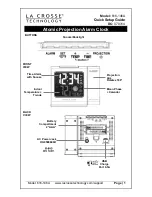
Ducts Application Note
VESDA-E
35424_02
5
Key Design Considerations
1.3.1 VESDA-E VEP-1P
The following should be considered when designing a VESDA-E VEP-1P for duct protection:
•
All inlet and exhaust pipes must be sealed at their far end with an end-cap.
•
The holes on the inlet and exhaust pipes should be facing the airflow as shown in the above figures.
Holes with the same orientation eliminate unwanted flow faults associated with cyclical operation,
maintenance or power failure of the duct system. However, in some industrial applications, where the
quality of air inside the duct is poor, it is recommended that all holes on the inlet and exhaust pipes face
downstream, that is, 180° to the incoming airflow).
•
The pipes should always be held in position at the duct walls with fittings such as rubber grommets.
Silicon is recommended, to ensure an airtight seal.
•
Regardless of duct width, the exhaust pipe must have 4 × Ø10 mm (13/32 inches) holes.
•
Never simultaneously sample from multiple ducts or ambient environments with the same the detector.
1.3.2 VESDA-E VEA
The following should be considered when designing a VESDA-E VEA for duct protection:
•
Sampling points install in duct pressures within -30Pa to +30Pa.
•
Maximum differential pressure (DP) of 30Pa between sampling points on same VEA unit.
•
The exhaust of the VEA unit must be within a pressure range -30Pa to +30Pa.

































